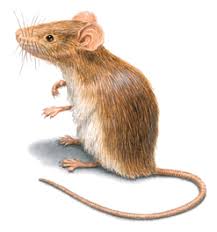A lot of mice can make sweet, fun pets, but the house mouse is not one of these. And when a rodent creeps into your home through a crack or gap or gnaws on drywall, stored boxes, and paper, or even wiring to make its nest–while urinating and dropping feces as it travels, it can be a danger and health risk to your family.

Although because mice are small, nocturnal, and nest in out-of-the-way places, you may well not even know you have a problem before the population gets large in addition to a major problem.
So, how do you know if you have mice? And why are they a health issue? The following provides a guide to house mouse recognition, behavior, disease and destruction, and signs.
Mouse Identification
Small, with a slender body, its physical characteristics include:
- Body length: 2 – 3 1/4 inches
- Tail: 3 – 4 inches long and hairless
- Weight: less than 1 ounce
- Color: usually light brown to gray
- Head: small with small black eyes, pointed snout and large ears
Mouse Behavior
- Mice are nocturnal, meaning they are most active at night—when most of your family is asleep.
- It is so flexible that it can get into your home through a crack or hole as small as 1/4-inch.
- A mouse can jump as high as a foot, and climb 13 inches up smooth, vertical walls.
- It can run 12 feet per second and swim as far as 1/2 mile.
- Being very inquisitive, a mouse will nibble or feed on any available human food, as well as other household items, such as paste, glue or soap.
- It does not need free water but can survive on the water in the food it eats.
Mouse Signs
Although mice will rarely run in the open during the day (unless you have a major infestation), they do leave signs of their presence. Look for:
- Dead or live mice.
- Nests or piled nesting materials.
- Gnawed holes in stored foods, piled papers, insulation, etc.
- Food scraps or wrappings left behind.
- Excreted droppings – 1/4 – 1/8 inch with pointed end or ends.
- Rodent hairs.
- Runways—indicated by narrow pathways where dust and dirt have been swept clean, grease marks are noticeable, urine trails seen under black light.
You might also:
- Hear it skittering on hardwood or laminate floors.
- Smell the fetid odor of a large infestation.
Disease and Damage: Why Are Mice a Problem?
Disease: According to the CDC, mice and rats spread more than 35 diseases directly to humans through handling; contact with rodent feces, urine, or saliva; or rodent bites. Humans can also contract diseases carried by rodents indirectly, through ticks, mites or fleas that have fed on an infected rodent.
A few of the diseases that can be carried or transmitted by mice are:
- salmonellosis
- rickettsialpox
- leptospirosis
- rat bite fever
- lymphocytic choriomeningitis (aseptic meningitis, encephalitis or meningoencephalitis)
- tapeworms and ringworm-causing organisms
Damage: Mice are also a problem because they:
- Have no bladder control, so they trail urine wherever they walk.
- Leave behind 50-75 droppings each day.
- Can reproduce up to 35 young each year—from a single female.
- Cause structural damage through gnawing and nest-building.
- Feed on and contaminate foods with urine, droppings, and hair.
Mouse Control
Now that you know how to tell if you have mice and the problems they can cause you can contact a mouse exterminator to help you get rid of them.
No comments:
Post a Comment